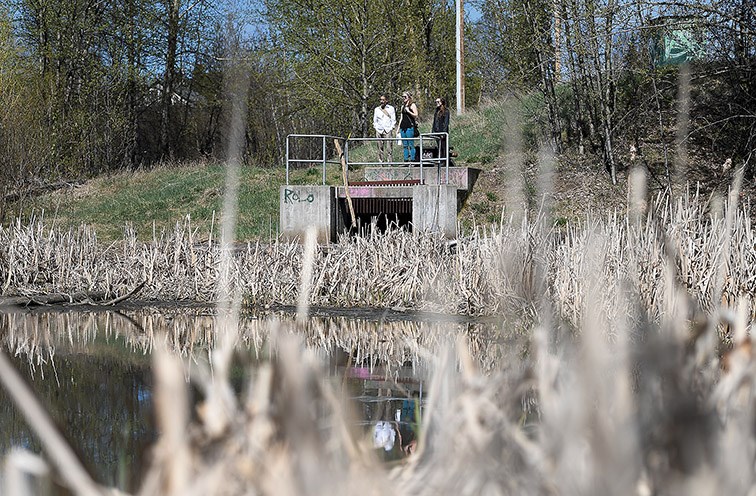A clean stormwater system makes for a healthy Hudson's Bay slough.
That was one of the messages city environmental assistant Andrea Byrne stressed when hosting an open house Thursday as part of B.C. Water Week at one of the city's most-treasured natural features.
The city manages three water systems - one for drinking water, one for sewage and one to handle storm water. Of the three, Byrne said the storm water system is often the most under appreciated and least understood.
Its main purpose is to direct water away from buildings, roads and other spots where it's not welcome and into places like the slough which can be reached through a pull-off at 2232 Queensway St.
It's a little-known fact that in addition to providing a roadway for motorists, cyclists and walkers, Queensway acts as a dike. And where the slough meets Queensway, there is a floodgate to prevent any backwash once the water gets into the slough.
"We also have a pump there that regulates the water within the wetlands so that if it gets too high on this end, we can pump it into the river," Byrne said.
While the city's drinking water and wastewater go through special treatments, the city relies on features like the slough to filter stormwater before it goes back into the Fraser and Nechako rivers.
Byrne, who spent the afternoon giving tours to curious locals, emphasized the need to keep the stormwater as clean as possible.
"Wetlands provide a great natural service, however they can get overloaded," Byrne said. "Things like garbage, things like oils, things that aren't naturally in the environment, the wetland can't handle."
Although a reasonably-healthy home for ducks, birds and beavers, a couple of garbage cans could been seen poking through the surface in the middle of the water. Plenty of litter also finds its way into the slough, Byrne said.
"When people overflow their garbage cans, overflow their recycling, it usually gets into the stormwater system," Byrne said. "When the wind blows, people think it's just going down the road, it doesn't matter but it will eventually end up in the creek. When a rain storm happens, the cigarette butts go down into the catch basin and into our creeks, our rivers and the wetland."
There are screens to block the larger pieces from getting in, "but they break down and they get through."
Other pieces of advice to keep unwanted items out of the slough include using commercial car washes, where wastewater is treated, cleaning up after your pets, and preventing fuel leaks from vehicles and other gas-powered machines.
In all, the system consists of 1,087 kilometres of open ditch or drainage channels, 412 kilometres of below-ground piping, 5,528 catch basins, 4,046 manholes, over 800 culverts, 186 inlet structures, 24 storage basins (detention and retention ponds) and six lift stations.



